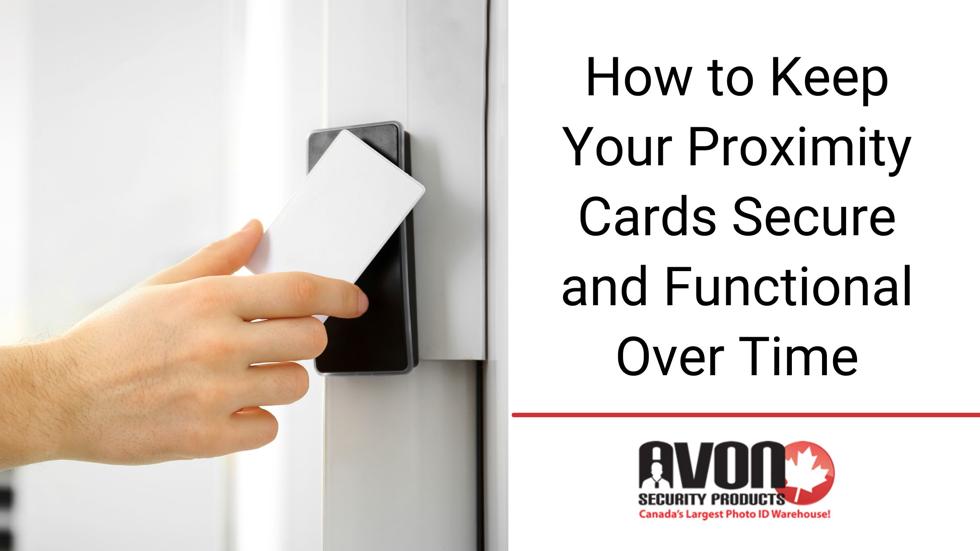A proximity card is only effective as a security tool when it’s in proper working condition. If it’s damaged or poorly maintained, it won’t be a reliable safeguard.
Here are practical tips to keep Avon Security proximity cards secure and operational for as long as possible.
Clean Your Card
Clear your card of any accumulation of dirt, dust and oils. Do this by dampening a soft, lint-free cloth with 99% pure isopropyl alcohol and then wiping it.
Isopropyl alcohol is excellent for cleaning tech because it dries very quickly. It won’t leave any moisture behind that could potentially damage the electronic components. Remember: your proximity card has an embedded metal coil inside of it. If this coil is damaged, the card will not interact with a card reader via radio waves effectively.
RFID cards work similarly. The cards also use radio waves to transmit data to a card reader. The similarities make it easy to mix up the two types of cards. Read this post on Understanding the differences between RFID cards and proximity cards for more details.
Protect Your Card with a Cover
After you wipe down your prox card, you should slip it into a clear vinyl cover. Keeping your card uncovered will expose it to dirt, moisture and UV rays, which could degrade its functionality. With the help of a simple accessory, you can shield your card against harmful elements and maintain its usability for longer.
Store the Card Safely
One of the biggest benefits of proximity cards is that you don’t have to directly touch the card reader in order to gain entrance. The card only needs to be near the card reader. It can even be stored inside a wallet, purse or pocket.
Whenever you stash your proximity card in a purse or pocket, make sure that the interior isn’t cluttered with other items. You don’t want the card to rub against coins, car keys or zippers. These could damage the card surfaces and minimize its functionality. The card should have its own dedicated pocket away from other items.
You can always hang your proximity card from a lanyard around your neck. A lanyard would ensure that your card is always on your person without having to risk damage inside of a pocket or purse.
Handle with Care
Don’t be rough with your card. Do not bend the card or grip it too hard. Doing this could damage the metal coil antenna inside and ruin the card’s efficacy. Hold the card gently from the edges every time that you use it.
Replace When Necessary
Proximity cards will not last forever. They are meant to last for several years of regular use, but even with frequent maintenance and care, they will degrade. So, if you notice that your card is looking worse for wear or that it’s not responding to card readers properly, you should get a new card. The old card can be easily disconnected from the building’s security system to guarantee that it can’t be used after disposal.
Avon Security can help you get a proper replacement for your old card. You can order more cards to implement into your security system or you can get ID card printers to print fresh cards whenever necessary.
Follow these simple maintenance tips for your proximity cards. When you take good care of your cards, they’ll stay functional and secure for longer.

